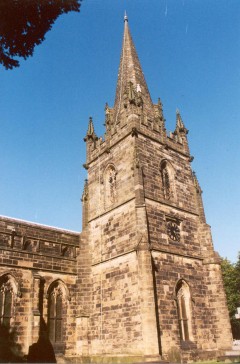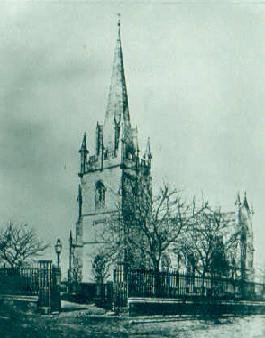This site has been the focus of religious activities in the Manor for over 900 years. A priest was in residence here when the Domesday Survey was taken in 1086, the first named vicar, Ricardus, was recorded in 1184 and fine parish registers date from 1558. A spire has dominated the village centre and the western approaches to Sedgley for at least 300 years and the sound of church bells has echoed over the Manor for some 500 years. There were four bells in 1552, six bells in 1720, eight bells in 1829 and a full recast in 1975.
All Saints, once the mother church to all nine villages, was last rebuilt during 1826/29 to replace a much smaller red sandstone building.The Gornal stone edifice, paid for by Viscount Dudley and designed by the architect Thomas Lee in the Gothic/Decorated style, still contained some of the old tower inside the new. It was capable of holding a congregation of over one thousand, but some fifty years later it was re-seated to hold 850.
In 2003 the entrance was redesigned with solid outer doors leading into the old porch and then onto the rear of the nave where doors in a magnificant glass screen open into the main interior. A cleverly hidden kitchen was also added at the rear of the north transept.
All the memorials, tablets and stained glass deserve attention. Of particular note are the C20th East window, the Great War memorial window and tablet, a brass tablet in memory of John Twigg Homer the Chairman of Sedgley Urban District Council in 1899 & 1900 and a wooden board listing over thirty Vicars of the Parish.
In March 2011 the Gornal and Sedgley Team Ministry added a valuable website covering All Saints' Church in Sedgley, St Andrew's in The Straits and St Peter's in Upper Gornal. From Sunday services and church history to advice on tracing your ancestors take a look at the Gornal and Sedgley Team Ministry website.


